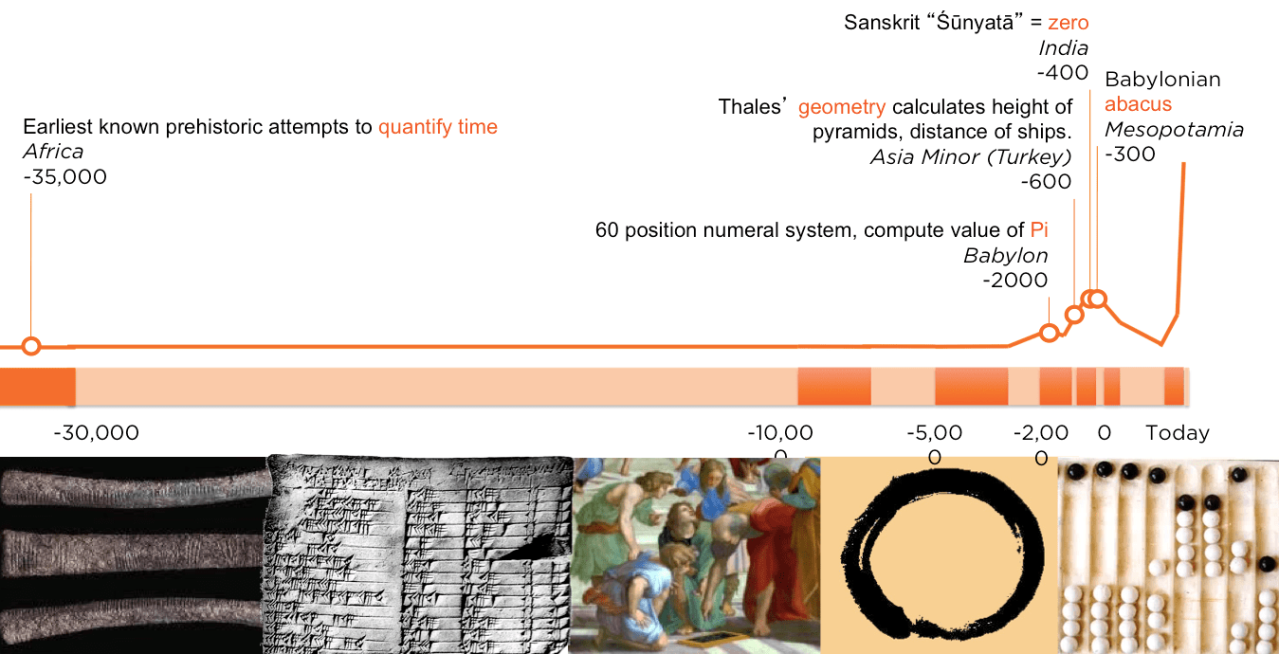In my prior two posts I introduce the five waves of innovation that transformed the human condition, and we explored the first of these, formalized language.
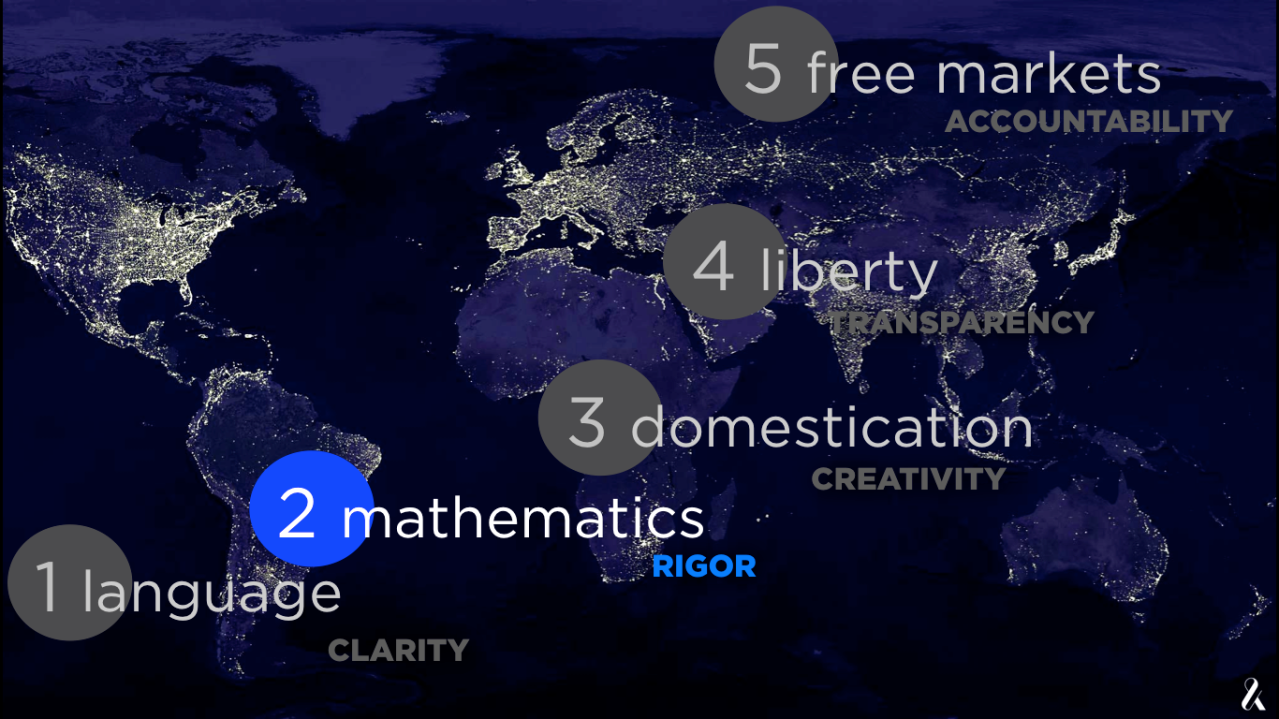
The Language of Numbers
Let’s explore the second wave. Mathematics represents a second form of language. If words allow us to make ourselves understood, numbers enable us to understand the world around us and share that knowledge in a perfect symbology that transcends time.
All of our metrics of progress are denominated in the language of numbers.
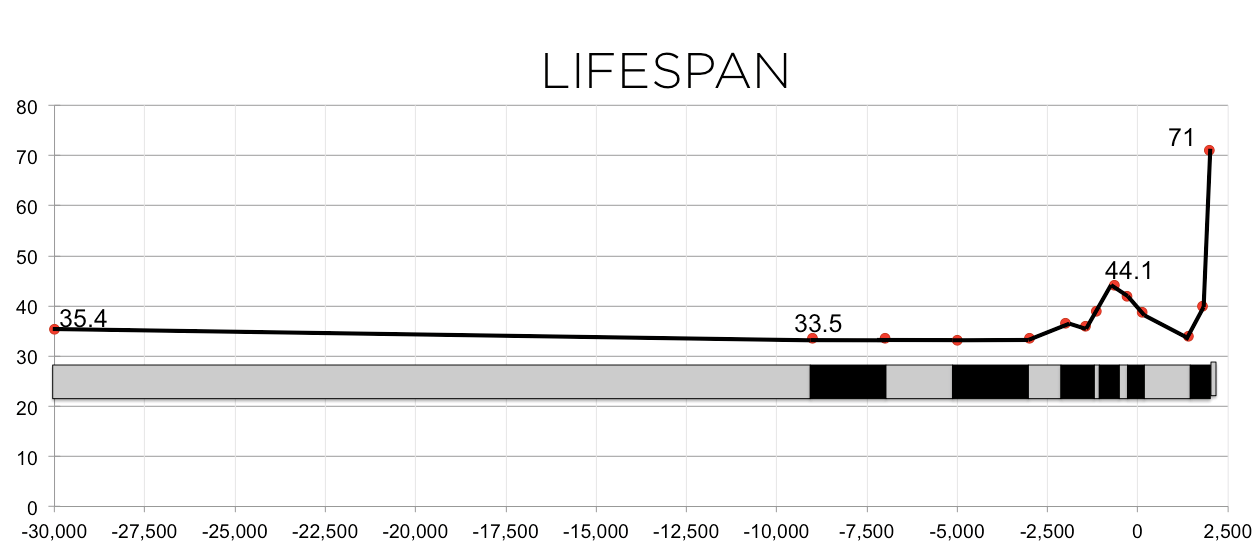
Average lifespan, charted in years for a male at birth, over the course of human history.
Ancient Accounting
The Ishango bone shown at left was carved from the fibula of a baboon, dated to the Upper Paleolithic era. It is believed to serve as a tally stick. It was discovered in 1960 in the Congo area of Ishango among the remains of a small community that was buried by a volcanic eruption.
Many millennia later, the Babylonians developed a sexagesimal (base-60) system depicted on the clay tablet above. They inherited the basis from the Sumerians or the Eblaite civilization. Babylon achieved fame for their astronomical calculations (aided by their invention of the abacus, at right, later adopted in China).

Greek mathematician Euclid hosted public courses using a system described in The Elements, his geometry textbook. His method assumes a small set of axioms that gave rise to many calculated theorems that enthrall or torment grammar school students to this day.

Sunyata is a Sanskrit noun meaning “’void’, an early conception of the use of “zero.” It symbolizes an important Buddhist teaching, that everything is interconnected in a chain of constant flux. This emptiness voids any permanent self identify; we exist in a state of “zero-ness”. By clearing the table of “objects”, it allows for counting not to begin with one, but rather with zero, which is essential to our math systems today.
Modern Numeracy
In 250 Diophantus employed symbols for abstract unknown numbers in terms of syncopated algebra. He wrote Arithmetica, one of the earliest treatises on algebra.
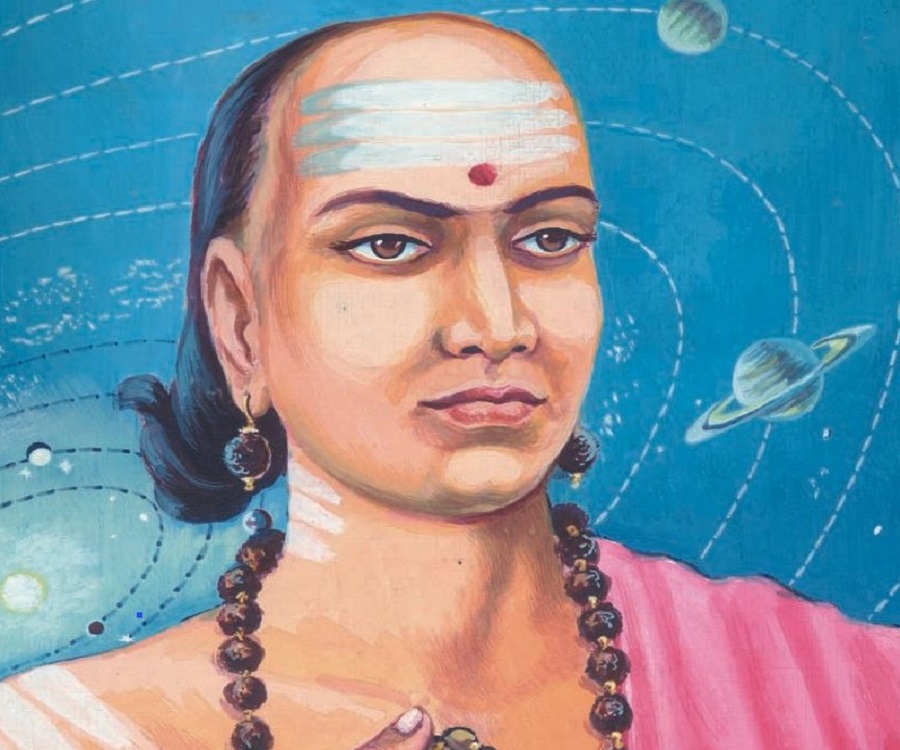
Aryabhata was attributed with the original mathematical concept of infinity.
By the 6th century Aryabhata founded astronomy in the classical age of Indian mathematics. He accurately calculated astronomical constants, such as the solar eclipse and lunar eclipse, and computed pi (π) to four decimal places.
Calculations advanced with Shridhara in the 8th century AD. The Hindu philosopher produced a formula to calculate the volume of a sphere, and formulae for solving quadratic equations.
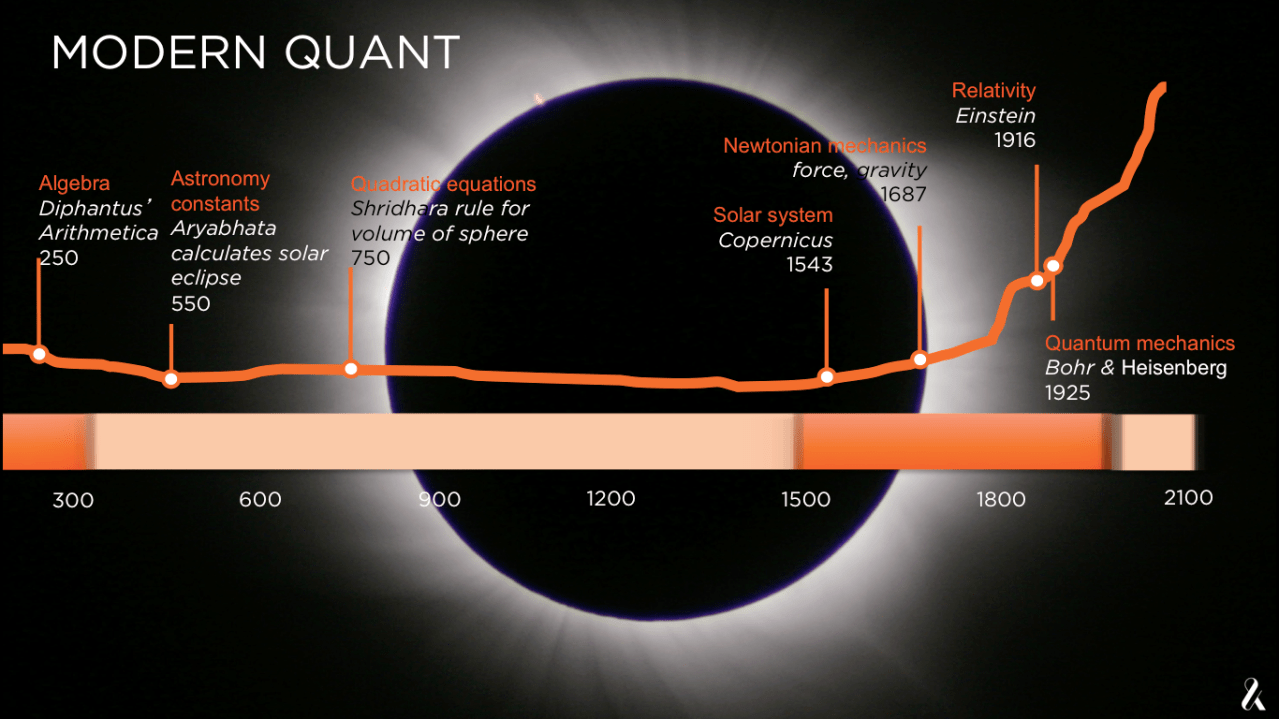
Eventually these calculations would produce heresies. Polish astronomer Copernicus observed that the earth revolves around the sun—caused scandal and outrage. His book on the subject was banned by the Vatican in the years after his death. A century later, Galileo was not so fortunate. In 1633, the Inquisition of the Roman Catholic Church forced him to recant the same theory. He was only exonerated 350 years later, when the the ironic “Pontifical Academy of Sciences” issued a formal statement to close a 13-year investigation into the Church’s condemnation.
The Language of Science
Isaac Newton’s genius gave us the power to understand our universe at scale. And his work was only modified centuries later with Einstein’s work followed by the quantum mechanics worked out by Niels Bohr in the early 20th century.
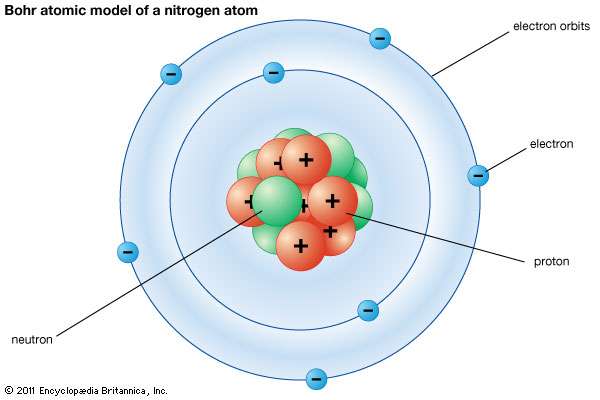
Werner Heisenberg in 1927 really boggled the mind with his Uncertainty Principle. He determined that at a quantum level, the position and the velocity of an object cannot be measured at the same time, even in theory. We’ve been wondering ever since about the health and wellbeing of poor Eric Schrodinger’s cat.
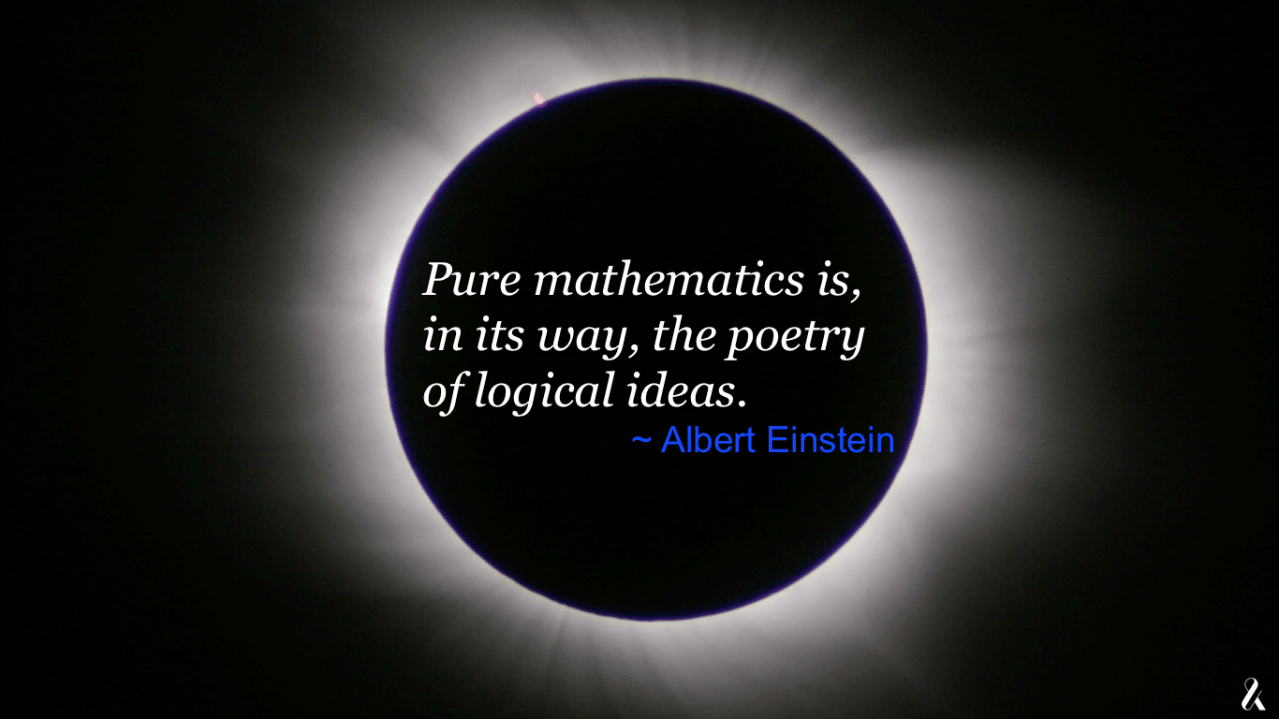
Know What Counts
Einstein captures our imagination with his work, and his views of math as the language of science. But Einstein was attributed with an equal but opposite thesis. Numbers may provide a language to explore the infinite, while recognizing the limits of their ability to communicate everything that matters to our lives.
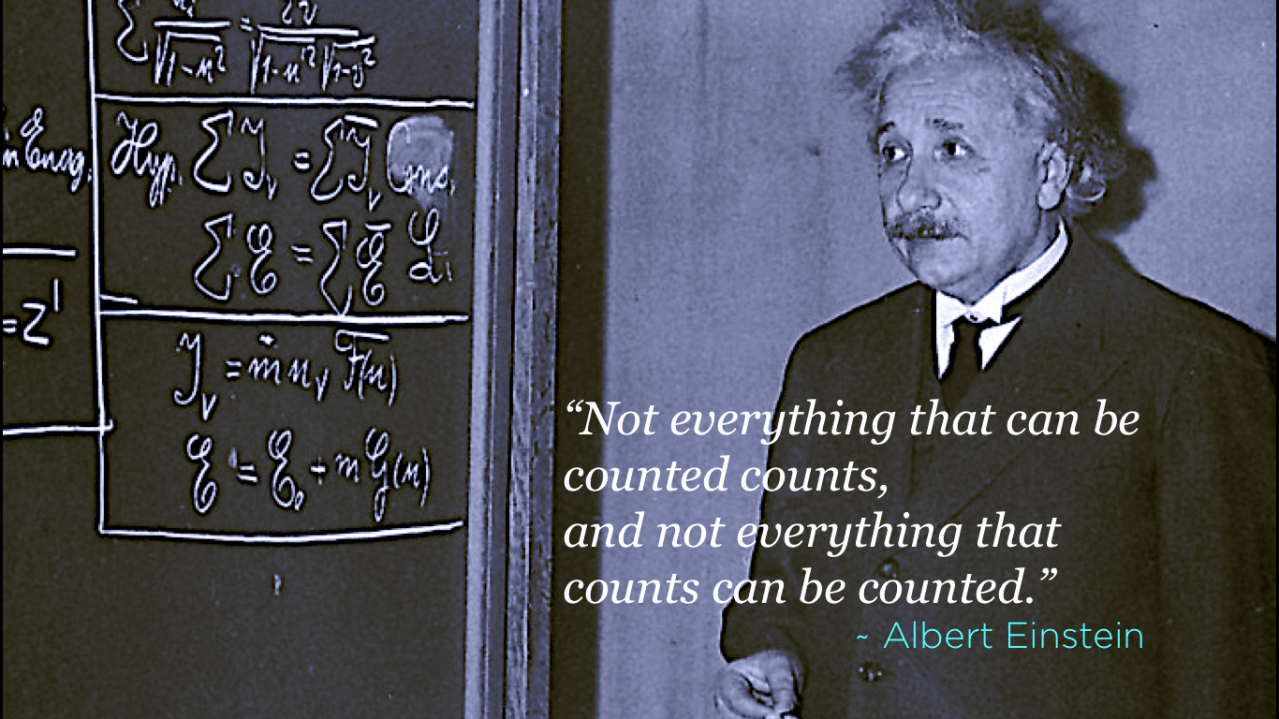
Understand your world. Know what counts.
